-
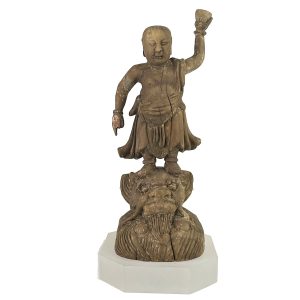
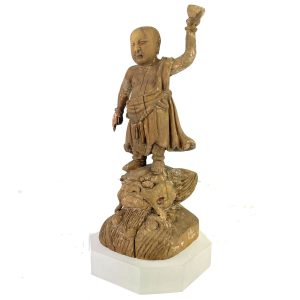
$850.00
H: 9″ W: 3.625″ D: 3.5″ | FREE UPS SHIPPING!
This rare carving of the infant Buddha with well defined features is clearly a provincial rendering that uniquely departs from traditional renderings. He holds a monk’s begging bowl as he points to the heavens and he stands on a lion’s head, as he is the lion of the Shakya clan. Given its small size, it was probably displayed on a home altar.
-
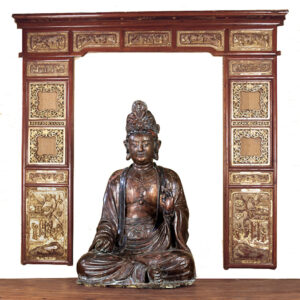
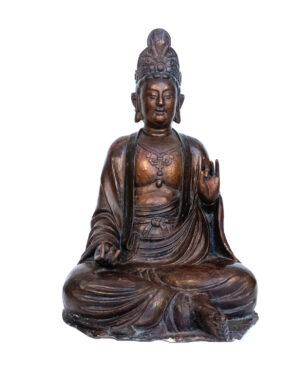
H: 42” W: 25” D: 27.5” | FOR PRICE AND SHIPPING INFORMATION CONTACT US AT 213-568-3030
This powerful, exquisite and rare almost life-size Guanyin seated in teaching mudra to spread the dharma, radiates serene spiritual energy. To optimally enjoy this statue, she should be placed in an elevated position as it was modeled to be viewed from below. Magnificently carved and covered with lacquer, this statue will fill any environment with meditative tranquility. Authentic Buddhist carved images of this size, beauty, quality, and shape are very difficult to find, especially after China’s modernization.
-
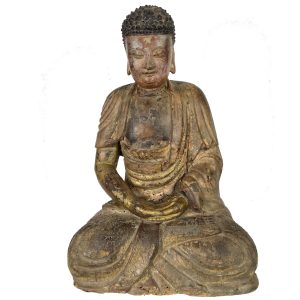
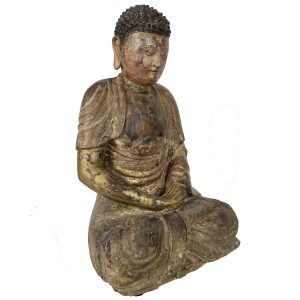
$3,400.00
H: 14” W: 9.375” D: 7.25” | FOR SHIPPING INFORMATION CONTACT US AT 213-568-3030
This fine rare Ming/Qing carving depicts Shakyamuni Buddha in meditation is made from fine dense wood with much of its iridescent pigmentation. He is masterfully carved with a serene, benevolent and pensive expression wearing plain but elegantly carved monks robes. This spiritual piece is a small yet very powerful image.
-
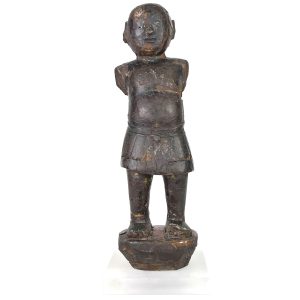
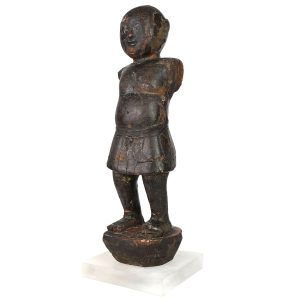
$985.00
H: 17.5: W: 6” D: 5” | FOR SHIPPING INFORMATION CONTACT US AT 213-568-3030
Given that this image of the infant Buddha is missing both arms it is remarkable that it is remains a powerful yet charming sculpture. Created by a skilled rural artisan from one dense piece of wood, this rare statue of the the young Buddha is a humble child in a relaxed and confident stance with a youthful torso, a round head, bent legs, wearing a modest waist-cloth and standing on a small plain round base.
-
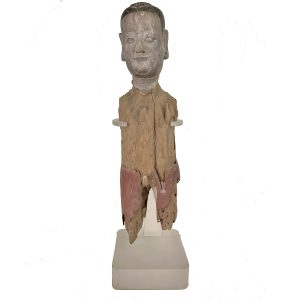
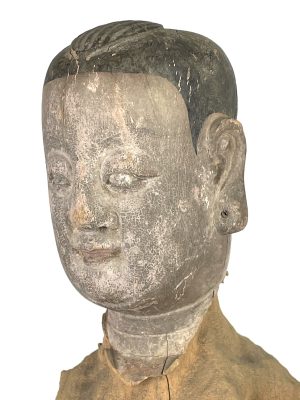
$650.00
H: 17” W: 5” D: 5” | FOR SHIPPING INFORMATION CONTACT US AT 213-568-3030
This rare wood carving of the Buddha as an infant is remarkable because of the way it has survived. As with many antique Chinese wood carvings, there is extensive deterioration from age/insect damage. Although there is total loss to the arms, legs and torso, it is virtually untouched from the neck up. This is a piece for lovers of wood, with the body worn to a delicately smooth but irregular surface. It is probably more striking than original piece, as its erosion shows the random miracle of chance and is highlighted on a frosted acrylic base. .
-
Sale!
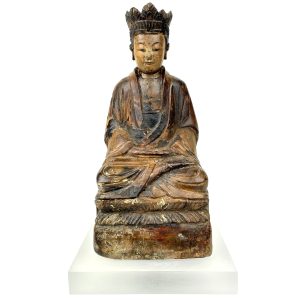
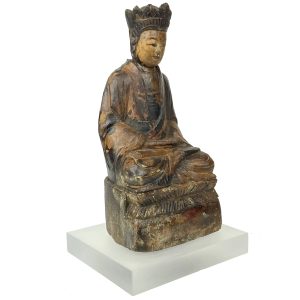
$695.00 Original price was: $695.00.$595.00Current price is: $595.00.
Ht: 9.5″ W: 4.5″ D: 3.75″ FREE SHIPPING in Continental U.S.!
This delicately carved home altar Guanyin is gender neutral in meditation on a lotus throne. Her humble demeanor, modest robes and absence of stylized decorative details exemplify the best of provincial Ming and Qing carvings. She is a tranquil figure with simple, soft, and beautifully rendered facial wearing a five-lobed crown symbolically representing the five Dyhani Buddhas and reflecting Vajrayana Tantric influence.
-
Sale!
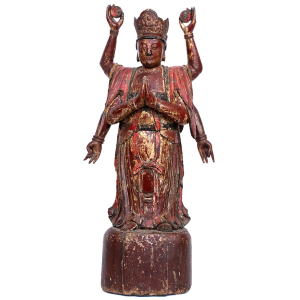
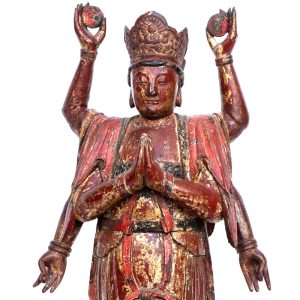
$4,200.00 Original price was: $4,200.00.$2,975.00Current price is: $2,975.00.
H: 29.5″ W:14″ D: 6.5″ CALL 213-568-3030 OR EMAIL VANISHINGARTS@GMAIL.COM FOR SHIPPING COST
This carving is probably Chun-ti P’u-sa, a tantric female deity called the Bodhisattva of Light, worshipped by Chinese Chan (Zen) Buddhists as a merciful Bodhisattva. In tantric style she has three faces, multiple arms and six hands, and an elegant lobed crown centered by Amitabha, as does Guanyin. This is an extremely rare and important piece and is as lovely as it is spiritual.
End of content
End of content














